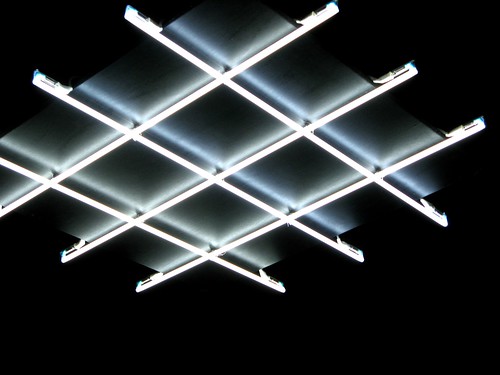Optical Art
«» – | + − · × ÷ ≈ ≠ ± ≤ ≥ ² ³ ½ € † # * ‰ § ¢ $ ¿ ¡ ∞ ‣ • 〈〉 … → ↔ «» – | + − · × ÷ ≈ ≠ ± ≤ ≥ ² ³
Optical Art ist eine Stilrichtung der Malerei, die um 1960 aufkam. Mit Hilfe von geometrisch abstrakten Formmustern und Farbfiguren sollen im Auge des Betrachters Bewegungs- und Flimmereffekte hervorgerufen werden, die zu optischen Täuschungen führen können.
Wichtigste Vertreter der Op-Art waren Victor Vasarely, Bridget Riley, Jesús-Rafael Soto, Richard Anuszkiewicz, Julian Stanczak, Carlos Cruz-Diez, Julio Le Parc, Youri Messen-Jaschin, Agam und sind, in der Bundesrepublik Deutschland, Volker Bussmann, Wolfgang Ludwig, Almir Mavignier.
de.wikipedia.org/wiki/Op_Art
«» – | + − · × ÷ ≈ ≠ ± ≤ ≥ ² ³ ½ € † # * ‰ § ¢ $ ¿ ¡ ∞ ‣ • 〈〉 … → ↔ «» – | + − · × ÷ ≈ ≠ ± ≤ ≥ ² ³
Op art, also known as optical art, is used to describe some paintings and other works of art which use optical illusions. Op art is also referred to as geometric abstraction and hard-edge abstraction, although the preferred term for it is perceptual abstraction. The term "Op" bears resemblance to the other popular movement of the 1960s, Pop Art though one can be certain such monikers were invoked for their catchiness and not for any stylistic similarities.
"Optical Art is a method of painting concerning the interaction between illusion and picture plane, between understanding and seeing."[1] Op art works are abstract, with many of the better known pieces made in only black and white. When the viewer looks at them, the impression is given of movement, hidden images, flashing and vibration, patterns, or alternatively, of swelling or warping.
en.wikipedia.org/wiki/Op_art
«» – | + − · × ÷ ≈ ≠ ± ≤ ≥ ² ³ ½ € † # * ‰ § ¢ $ ¿ ¡ ∞ ‣ • 〈〉 … → ↔ «» – | + − · × ÷ ≈ ≠ ± ≤ ≥ ² ³
-


No comments:
Post a Comment